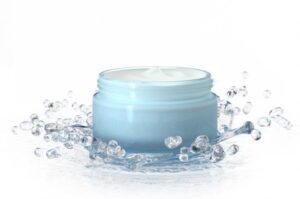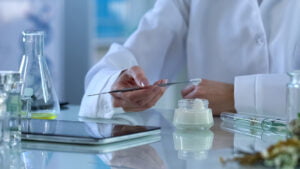 What is a moisturiser? Is it the same as an emollient a humectant or a hydrotrope?
What is a moisturiser? Is it the same as an emollient a humectant or a hydrotrope?
Moisturisers, emollients, humectants and hydrotropes have one thing in common, they all deal with water in one way or another.
There seems to be a misconception that moisturisers and emollients are the same thing. Unfortunately they are not exactly the same, hence they have a different name.
MOISTURISER
A moisturiser is an emulsified blend of fats, waxes and oils which utilises properties of those certain chemicals to enhance the moisture retention level on the skin surface.
As explained before skin can dry out due to heat from the sun and dry air. “Once the skin has no more moisture to protect it, then the skin starts to denature (much like what happens when you boil an egg and the albumen changes form). This denaturing creates what we perceive as pain and burning. After this burning, we have the blistering of the skin which leads to that typical peeling of the skin.”
This drying out of the skin also results in premature aging of skin. The skin starts to lose its elastic properties as there is some damage to the collagen and elastin under the epidermis through the heat and drying.
Therefore a moisturiser must allow the skin to “breathe” and also to maintain a balanced level of moisture. This helps to maintain its suppleness but only as long as the moisturiser is always present. Unfortunately we perspire and the cream dries out so we need to regularly apply the cream to achieve maximum effect.
EMOLLIENT
An emollient is a product that “softens” and “oils” the skin making it more pliable but not necessarily retaining moisture onto the skin. If anything it may actually occlude rather than retain the water onto the skin. So “Sorbolene” creams are mainly emollients but not very good moisturisers as they are made up of heavy emollients such as vaseline or petroleum jelly with some emulsifiers.
Examples of emollients are capric caprylic triglyceride, cetearyl octanoate, lauryl alcohol, PEG-7 glyceryl cocoate, almond oil
HUMECTANT
A humectant is a product that reacts with water, binding it hydrostatically into a mesh type network. This doesn’t necessarily result in any type of moisturising effect as the water is hydrostatically bonded within the humectant molecule. This is invariably used to prevent a product from drying out.
Examples of a humectant is propylene glycol, glycerine, and sorbitol.
HYDROTROPE
A hydrotrope is a product that binds water through electrostatic forces due to their strong affinity to water (through their hydrophilic, or water loving, head) and some organic molecules (through their short chain hydrophobic, or water hating, tail). Hydrotropes are fantastic when used in products such as conditioners. Through its ability to capture water molecules and bind them tightly to an organic phase (the hair follicles) they prevent hair drying out through harsh hot blow drying.
Some examples of hydrotropes are cyclodextrin, dendrimer, sodium benzoate.

 What is a moisturiser? Is it the same as an emollient a humectant or a hydrotrope?
What is a moisturiser? Is it the same as an emollient a humectant or a hydrotrope?